Don't ask GPT to make LESS bullet points
AI-generated text can often feel overly structured, making it less engaging for readers. While this structure aids machines, it can limit creativity and readability for humans. In this post, we explore why AI struggles with vague prompts and how to provide clearer, more specific instructions to a...

If you've used AI for generating text for emails, information, or content like a blog post, you might have noticed that by default, the text is highly structured. In some sense, this might be a good thing, especially when it's consumed by machines or where a certain structure is given and desired (like a manual or a product specification that wouldn't necessarily include a lot of continuous text).
But sometimes it can be incredibly annoying—like any other extreme—when there's too much structure, especially when it's to be consumed by readers who absorb content much better when there's less monotony and a bit of variety.
So, you might ask the AI to be less structured. Well, this doesn't work either.
In this blog post, I want to talk about the overly structured texts generated by AI, how they cope with vague terms like "less," or "a bit," and what you can do about it to get what you want.
---
Why Is It So?
AI-generated texts are often too structured because they rely on patterns and existing data to generate content. This reliance results in a lack of originality and can lead to repetitive text. AI models analyze vast amounts of human-generated content to find the balance between proper grammar usage and vocabulary choice, which can make the text appear structured and less creative compared to human writing. If you want to read more about these phenomena, have a look at this article.
---
A Simple Example: Generating GitHub Repositories
The Default Is Highly Structured
Prompt:
Generate information for 5 fictitious GitHub repositories
Result in ChatGPT:
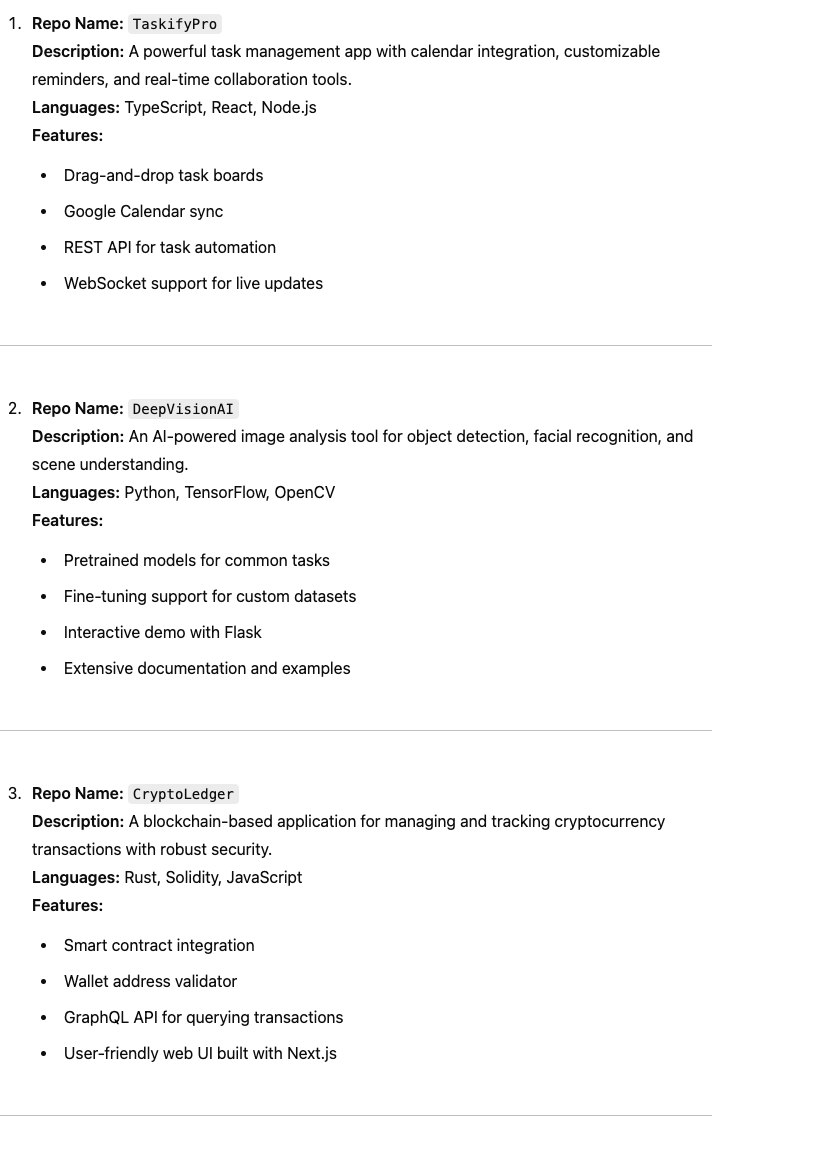
And Claude isn't much different—highly structured and mechanistic:
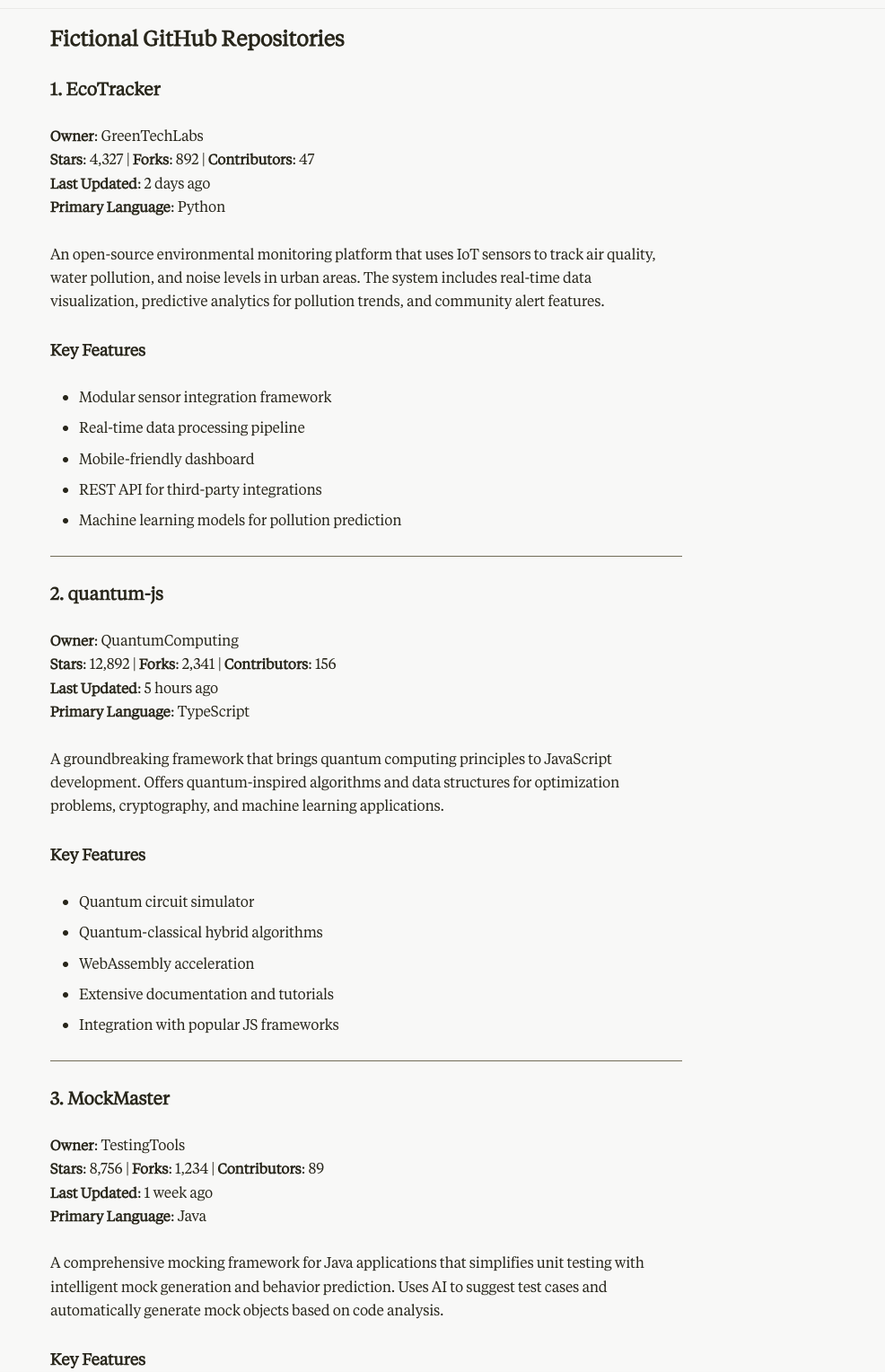
---
Vague Terms Don't Work
The list above looks boring, so let's ask the AI to add some variable structure.
Prompt:
Make the items have slightly different structures.
ChatGPT somehow did what I asked for, but the result is just too extreme. If you look at the title for the description for each item, they are all different, although I asked for a slight change, not fundamental. Here are the titles used:
- Overview
- What It Does:
- Summary
- ...
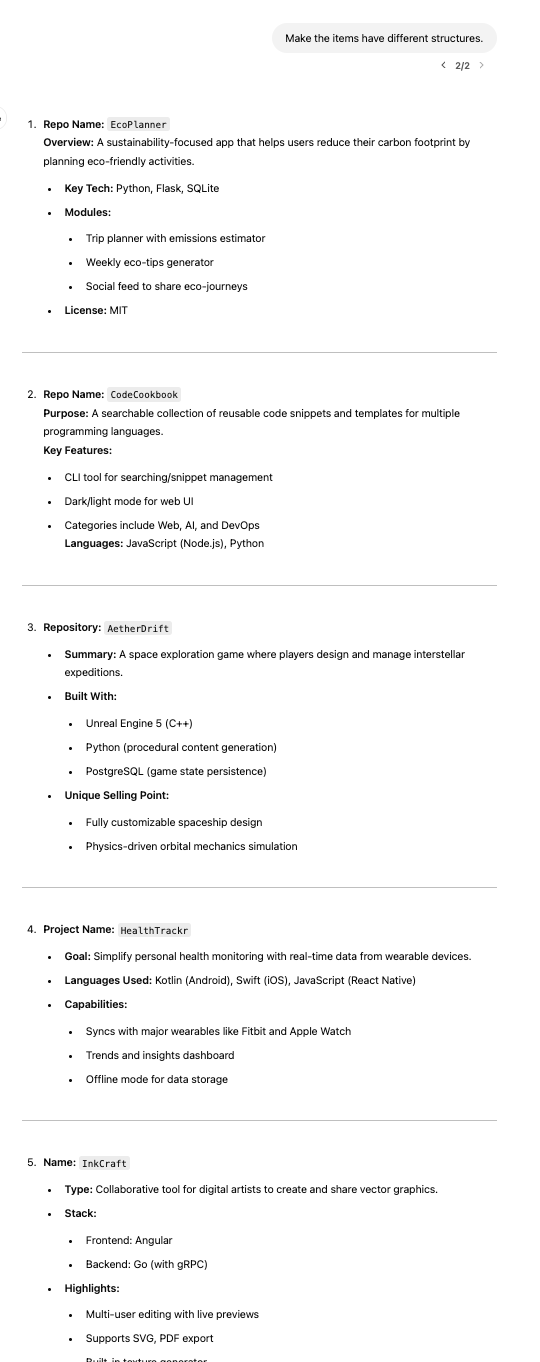
But why is it so? Simply because I used a vague term like "slightly" or "a bit."
Vague terms don't help the AI adjust its output effectively.
---
Tendency to Extremes
Imagine you want to write about a project, and you're asking AI for help.
Again, the default is a highly structured text like the one below.
Prompt:
Describe the project Coolify
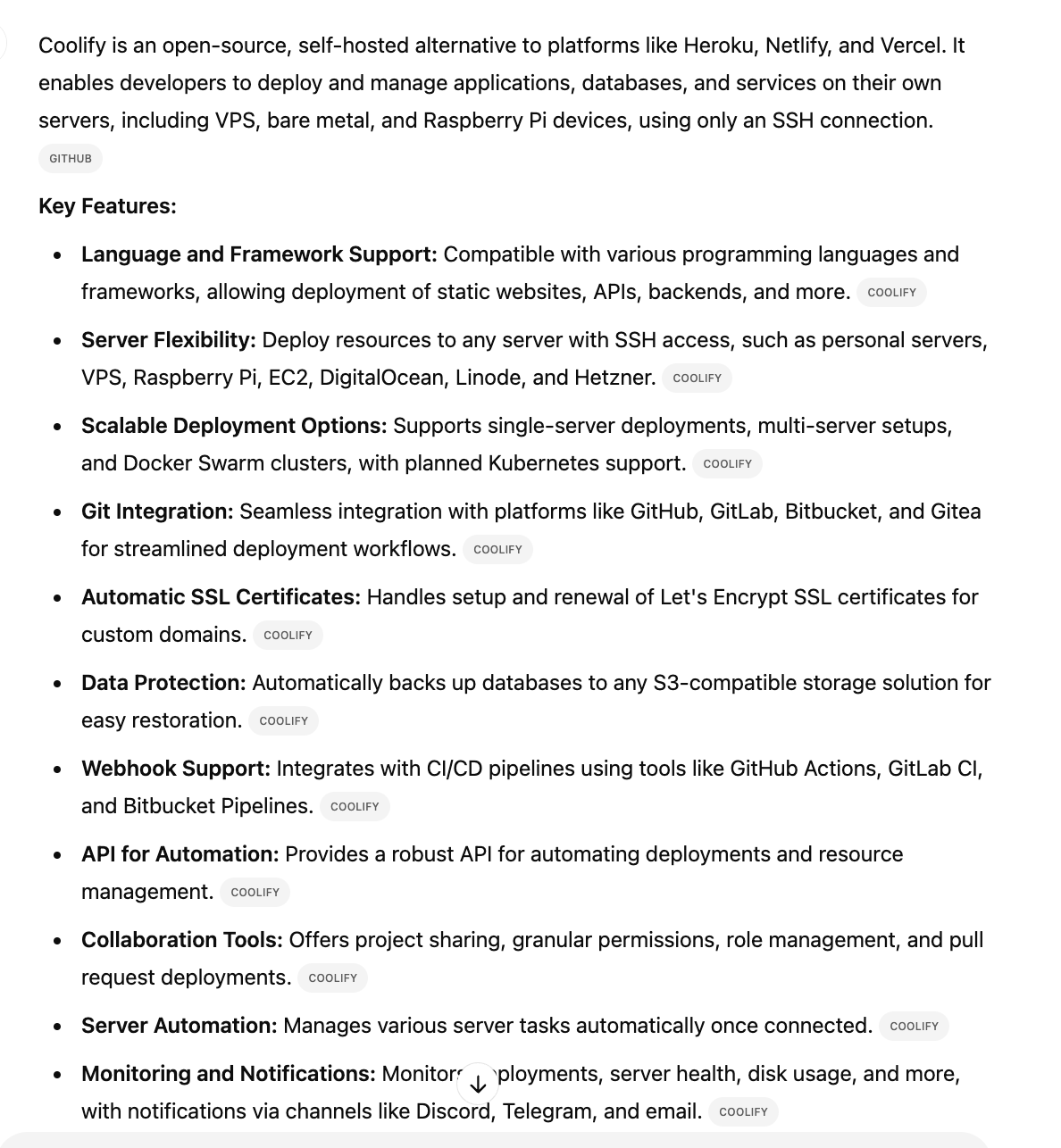
With descriptions and bullet points, which again, in some contexts, might be helpful for product comparison. But in other contexts, it is hard to absorb if it's too much. It would be better if there was a narrative or grouping of the features if they were too many. Don't you think?
Let's ask the AI to make fewer bullet points:
Prompt:
Can you provide a brief description of Coolify with a bit fewer bullet points?

As you might have expected, again, the vague term like "a bit" not only causes the AI to ignore your request but it produced the exact opposite.
---
A Simple Solution
As in the previous example, the solution to this kind of "misunderstanding" is to be more specific, without actually having to tell it exactly how many bullet points, but instead giving it a percentage. Like the one below:
Prompt:
Generate information for 5 fictional GitHub repositories, with 40% of the item descriptions having different structures.
Now, as you can see, it added some varieties in the structure, which corresponds more or less to the percentage given of 40%. Note that you could achieve something similar if you give it a template with variations, but if you don't have such a template, this might be the easier way.
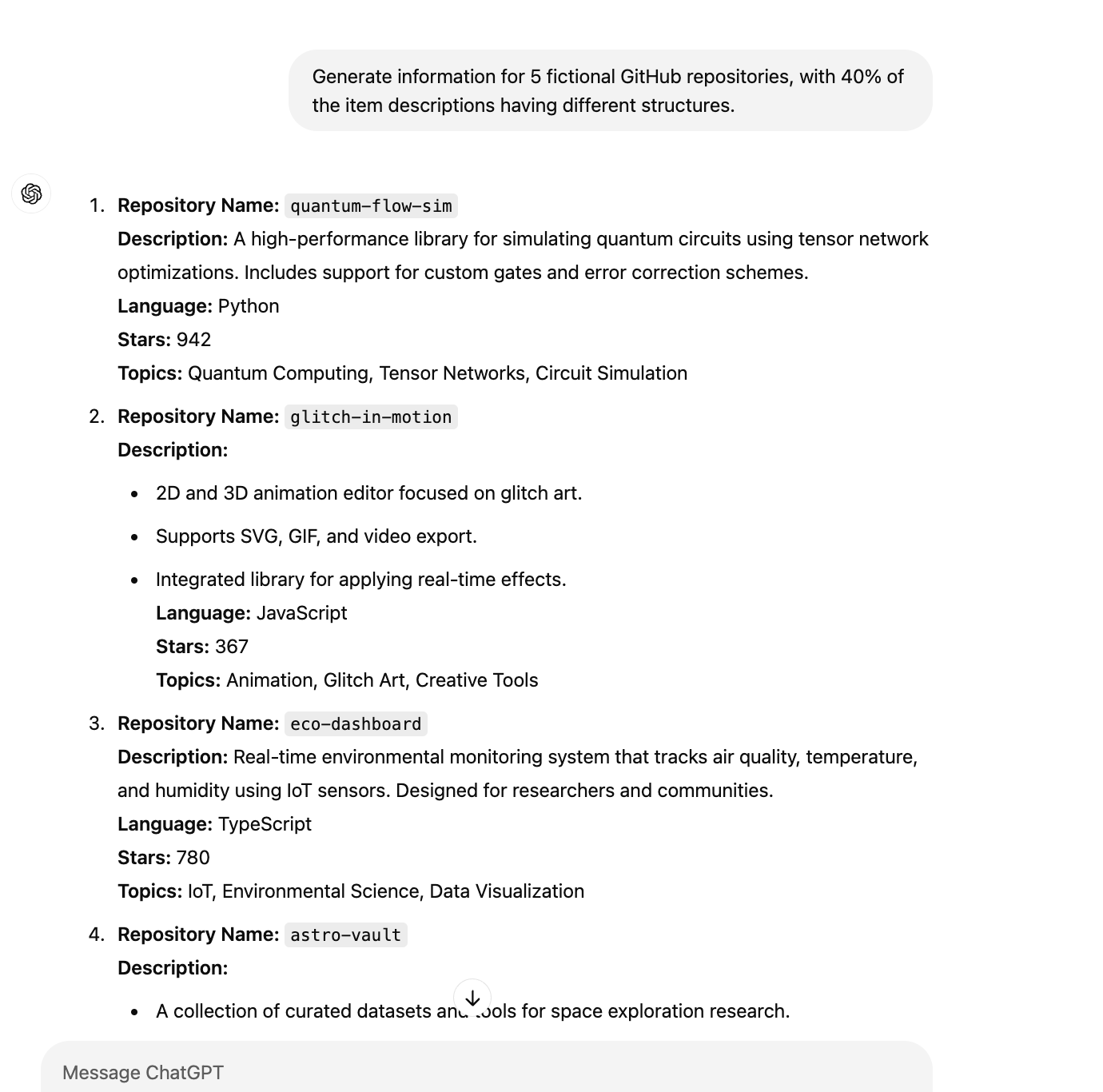
---
Let's revisit the Coolify example with a more precise instruction.
Prompt:
Please describe Coolify with 30% bullet points and the rest continuous text.
And as you can see, it moved some of the bullet points into the intro and conclusion of the description of the project. Without even reading the text, it looks less structured with more continuous text.
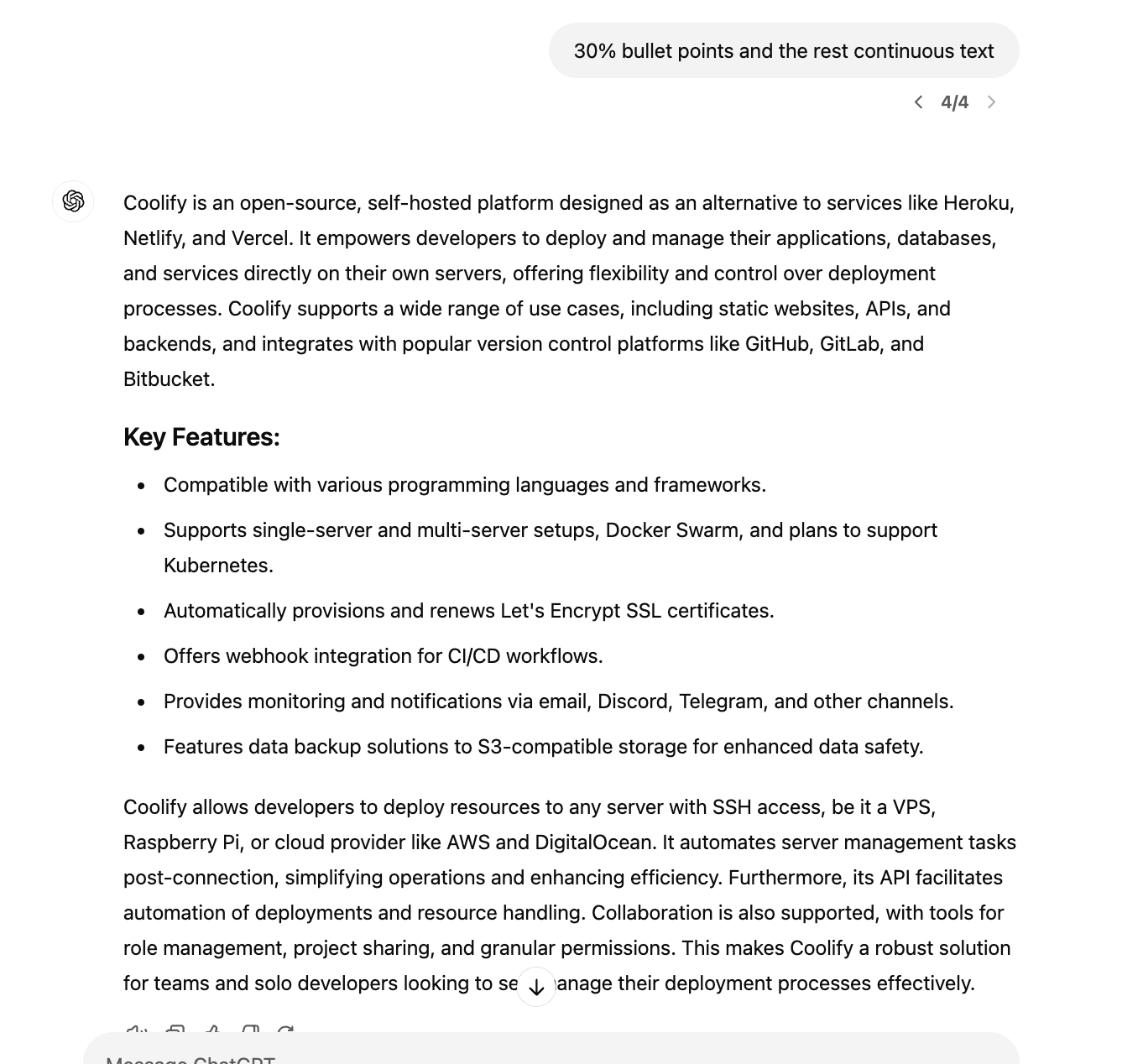
---
Wrap-Up
One of the fundamental pieces of advice for crafting prompts that produce what you want is to be specific. In this blog post, we observed a few common behaviors that represent almost the default of many foundation models (fine-tuned models might behave differently), like the highly structured output, the tendency to extremes, and inability to cope with vague terms. We introduced ways to cope with these default behaviors to produce text that shows the desired structure without having to provide preconfigured templates.
---
Additional Tip: Improve Your Prompts with Anthropic's Prompt Optimizer
You can also significantly improve their prompts using the Anthropic Prompt Optimizer. This tool helps you refine your prompts to get better results from AI assistants, ensuring that the generated content meets your expectations.




Comments ()